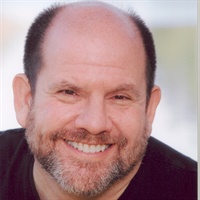CC08 Dialogue 01 - Key Concepts from Attachment Theory That Influence Your Work - Susan Johnson, EdD and Stan Tatkin, PsyD
- Average Rating:
- Not yet rated
- Topic Areas:
- Dialogues | Attachment | Couples Therapy
- Categories:
- Couples Conference 2008 | Couples Conference | Pioneers in Couples and Family Therapy
- Faculty:
- Sue Johnson, EdD | Stan Tatkin, PsyD, MFT
- Duration:
- 56:43
- Format:
- Audio Only
- Original Program Date:
- Apr 25, 2008
- License:
- Never Expires.
Description
Description: This discussion explores how attachment theory enhances couples therapy by revealing the emotional and biological roots of relationship dynamics. Topics include emotional disconnection as a common cause of affairs, the role of mindfulness and self-regulation, and EFCT’s “softening” process, which helps partners move from conflict toward connection.
Educational Objectives:
- To become aware of the key concepts of Attachment Theory.
*Sessions may be edited for content and to preserve confidentiality*
Credits
Handouts
| Ericksonian Learning Snapshot (245.5 KB) | 2 Pages | Available after Purchase |
Faculty

Sue Johnson, EdD Related Seminars and Products
Dr. Sue Johnson is an author, clinical psychologist, researcher, professor, popular presenter and speaker and a leading innovator in the field of couple therapy and adult attachment. Sue is the primary developer of Emotionally Focused Couples and Family Therapy (EFT), which has demonstrated its effectiveness in over 30 years of peer-reviewed clinical research.
Sue Johnson is founding Director of the International Centre for Excellence in Emotionally Focused Therapy and Distinguished Research Professor at Alliant University in San Diego, California, as well as Professor Emeritus, Clinical Psychology, at the University of Ottawa, Canada.

Stan Tatkin, PsyD, MFT Related Seminars and Products
Stan Tatkin, PsyD, MFT, is a clinician, researcher, teacher, and developer of A Psychobiological Approach to Couple Therapy (PACT®). He has a clinical practice in Calabasas, CA, where he has specialized for the last 15 years in working with couples and individuals who wish to be in relationships. He and his wife, Tracey Boldemann-Tatkin, developed the PACT Institute for the purpose of training other psychotherapists to use this method in their clinical practice.


